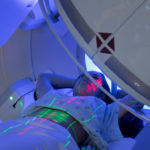What are the different surgical treatment options used in the treatment of throat cancer?
Surgery is one of the modalities of choice for the definitive treatment of early oropharyngeal or throat cancers. In locally advanced cases, surgery can be used in conjunction with radiotherapy. The oropharynx is a complex anatomical site that’s why surgery is a preferable treatment only in select cases. A spectrum of surgery extends from wide local excision to laryngo-pharangectomy.
The following different types of surgical treatments are applicable for throat cancer patients
Endoscopic or Robotic surgery (TORS)
Minimally invasive techniques, such as transoral laser microsurgery (TLM) and transoral robotic surgery (TORS), have made resection of carefully selected early oropharyngeal cancers both feasible and well tolerated.
In this type of surgery, an endoscope or robotic arm is passed down the patient’s throat to locate a tumour. An endoscope is a long and thin tube fitted with a light and camera at one end. This can be performed either during a biopsy and also in the treatment of some early stage throat cancers.
Endoscopes can also be used to carry laser beams for laser-assisted surgeries. Lasers can be used to excise the tumour (cut it out). The only downside of an endoscopic laser assisted surgery is that there is no viable tissue that can be removed and tested for margins.
Pharyngectomy (partial or Total)
Pharyngectomy literally means removal of the pharynx (throat). This is an aggressive form of surgery. In cancers of the hypopharynx, partial pharyngectomy may be performed to remove the sections of the pharynx that are affected by cancer. Often, the voice box (or larynx) is also removed in addition to pharyngectomy. Most patients require reconstructive surgery (flaps or tissue transfer from other body parts) to rebuild this part of the throat, and to regain the ability to swallow food.
Lymph node removal/Lymph node dissection
In moderately advanced and extremely advanced stages of the disease, cancers of the oropharynx and hypopharynx can spread to the lymph nodes present in the neck. If an oncologist discovers (during staging) that cancer has spread to lymph nodes, then a lymph node dissection is performed at the same time as the throat surgery (to remove a primary tumour). The surgeon may also choose to perform a lymph node dissection based on an analysis of how much a particular stage or grade of a cancer is likely to spread to the lymph nodes in the future.
Lymph node (neck) dissections, can range from a radical neck dissection to a less extensive, more selective neck dissection, with the main difference being in the number of lymph nodes being surgically removed. In a full radical neck dissection, the nerves and muscles that are responsible for enabling some of the key neck and shoulder movements, are removed alongside the affected lymph nodes. This type of surgery might be urgent to ensure that all of the potentially malignant lymph nodes get removed.
Thyroidectomy
Sometimes, it is a part of throat cancer surgery when cancer spread into the thyroid gland (regional metastasis) and either a part of the thyroid gland (or all of it) must be removed. The thyroid gland is present in the front part of the neck and is wrapped around the sides of the windpipe. The gland produces hormones that control the human body’s metabolism. If this gland is removed, the body is no longer equipped to produce thyroid hormones. This deficiency needs to be controlled by supplementing the diet with levothyroxine pills.
Tracheostomy/tracheotomy (windpipe surgery)
In certain aggressive stages of throat cancer, the windpipe is connected to a hole in the front of the neck, which helps the patient breathe, by letting air in and out of the lungs through this same hole (called a stoma). In some moderately advanced cases, a tracheostomy may be a temporary requirement after a partial pharyngectomy. The plastic tube can be removed once the patient recovers fully.




